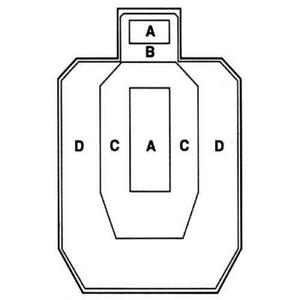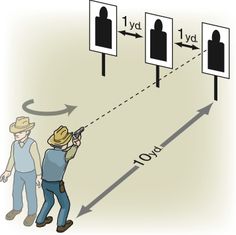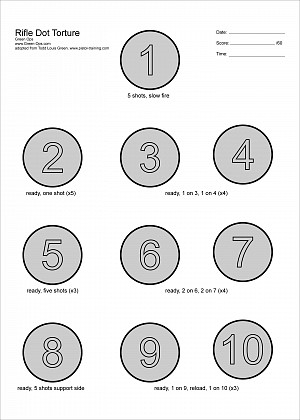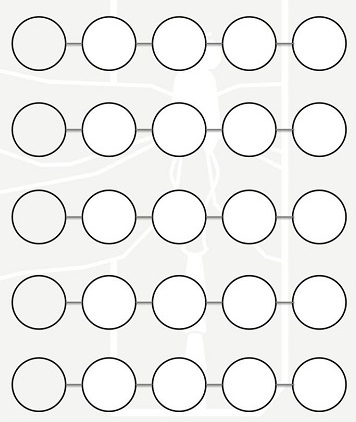We’re all familiar with the assholes who work behind the counter at gun shops — you know the ones I mean, those who want to show off how much more they know about guns and shooting than the Idiot Customer who simply wants to know whether a revolver or pistol would best suit his purpose, and who gets for an answer a supercilious blizzard of inside jokes and buzzwords which makes him or her feel like, well, an idiot.
This post is not quite about that.
As Longtime Readers know, I stand firmly opposed to the use of jargon and acronyms (although there are times when I fall into the trap myself). In the past, I’ve written about Mystics at length so I’m not going to expound on it further, but I did notice its manifestation in an article on self-defense drills linked by Insty.
As a rule, I enjoy Ed Head’s articles, but this one falls into Trap #1: obscure, unexplained terms and descriptions, and it falls during the very first paragraph of instruction, to whit:
The El Pres[idente] has become a competitive shooting standard, a drill practiced incessantly by top competitors. From the standpoint of an armed citizen, its best used sparingly as a test of your skill level, carry pistol and gear. To set it up, you’ll need three Option targets set 1 yard apart.
And for those people who don’t spend hours at the range, or weekends at competitions, “Option targets” are…? these things:

One picture, and it all becomes crystal clear to someone unfamiliar with the arcana of shooting geekery. Then Head spends a couple dozen words trying to describe the El Presidente drill, when all he needed was one of these:

And again, this time with explaining “Dot Torture*”:
Requiring 50 rounds and fired at a seemingly easy 3 yards with no time limit, Dot Torture requires total concentration, perfect sight alignment and a perfect trigger press for every one of the 50 shots. The targets are printed on a single 8.5×11-inch piece of paper and consist of circles measuring a little less than 2 inches.
And all becomes clear with:

(Actually, I prefer this one, but nemmind…)

Back to the main topic: instruction should always — always — be delivered in a manner designed to impart the content with a maximum degree of clarity and a minimum amount of explanation. (By “minimum”, I mean not wordy or obscure. If a picture imparts the knowledge better than fifty words, and more quickly withal, use a damn picture.)
Shooting Times (or rather, their editors) should know better. Ed is a very knowledgeable shooter and I agree with just about everything he says about shooting. But he’s not well served by sloppy editing. As this pic shows:

*As an aside, I absolutely love the dot torture drill, but I usually save it for .22 practice, whether with a handgun at 25 feet, a non-scoped rifle at 50 feet, and a scoped rifle at 75 feet. And always, regardless of type of gun, a maximum of two seconds per shot allowed. In a future post, I’ll show a modified version from my last trip to the range.

“Easily understood in a single, rapid reading.”
That was the standard for good writing put to us by LTG H.R. McMaster when I worked for him at my last assignment before I retired from the Army.
I guess Playboy could’ve enjoyed greater popularity if only they’d provided detailed instruction with the pichurs.
KdT – my dear chap – were you not a few thousand miles distant I would hug you and kiss both cheeks (above belt).
You have brought joy to my morning
As a Lawyer, aged about 70, I work with words 6 days per week. I have instructed many staff about writing letters and documents (some have learnt well; others have improved a bit, but all of them needed improvement).
Clarity; precision; comprehensibility. “What will the recipient make of this”?
Next, I find may day is beset with “buzz-words” and acronyms. Beware any acronym issued by a government e.g. ‘OSP’ (One step payroll – which means that all employers within Oz must now send to the Tax Office, by electronic means, information as to who they paid and how much, on a weekly or fortnightly basis). Beware any buzz-words for the image usually conceals a lack of substance.
By good fortune there are still some rebels who can identify poor language and mock it. That is a story for another time.
But the scales fell from my eyes when you mentioned that you eschew acronyms. By Crikey! That is a major reason your items are easy to read. You deserve an award for considerate-ness!
Thank you. I feel better now.
Yes! I’ve spent many hours writing how-to instructions, checklists and training aids at various jobs, often because the company supplied stuff was such total crap that assumed you already knew how to do whatever the task was.
I was drilled early to always spell out any acronyms the first time they are used (when writing military tech documents you can’t really avoid them) and avoid buzz words and cliches. Otherwise when the rubber meets the road you may not have missionized the long pole in the tent!
I was also taught that you should write your continuity documents so that on the second day of the war your replacement from the states would be able to kick your corpse aside, pick up your documents and continue where you left off.
My documentation when working a help desk was always larger than that written by other folks due to the amount of graphics I used. Screen prints from the computer screens or equipment manuals annotated as needed (…then you press the button circled in red with the big red arrow pointing at it).
When I bought my first computer the programs I bought with it came with multiple volumes of how-to and explanations. For every program I bought, I had to buy an “aftermarket” manual. I was NEVER able to find the answer for what I needed to do in the manuals included with the programs.